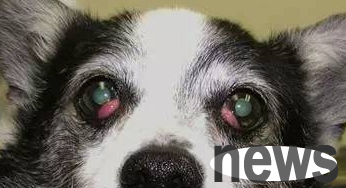The third eye has hyperplasia, commonly known as cherry eyes. A few years ago, most domestic small animal doctors took direct resection surgery, but there were many sequelae, especially sluggish eye disease. What is the reason? How to solve it somet...
The third eye has hyperplasia, commonly known as "cherry eyes". A few years ago, most domestic small animal doctors took direct resection surgery, but there were many sequelae, especially sluggish eye disease. What is the reason? How to solve it sometimes now? It is necessary for pet owners to understand.
Inducing factors:
Most dogs mainly feed high-protein and high-energy animal feed, such as beef and beef liver, and also feed braised duck meat, braised duck dried duck, lard residue, etc.

susceptible breeds
American Cocker Spaniel, British Bulldog, Beagle, Boston Terrier, Pekingese, Shih Tzu, Pug, etc.
Clinical symptoms
Cherry eyes of animals The third eyelid glands of the third eyelid are swollen due to infection, with flushed conjunctiva, tears, etc. Gradually, a very small granuloma appears at the inner corner of the lower eyelid of the dog, pink. Some two eyes also occur at the same time. The pink tumor increases in a short time, and generally grows to the size of a pea within 3-7 days. Usually, one eye occurs shortly after the other eye occurs one after another, and some only one eye occurs. Some sick dogs often scratch their eyes with their front paws, so they may experience mechanical damage to the cornea or worsen eye inflammation. Purity secretions can be seen in the later stage. At this time, antibiotic eye medication may temporarily have some effect on eye inflammation, but it cannot fundamentally solve the problem. Often, the inflammation of the eye will occur repeatedly after a few days.

Treatment plan
1. The traditional surgical method is to remove the hyperplastic eyelid glands, but the third eyelid gland is an important gland that secretes tears, accounting for 30%-50% of the total tear volume. Therefore, the gland removal will lead to tears loss, which may lead to renal eye serpentine as the animals age.
2. The correct treatment method at present is to implement the third eyelid gland embedding surgery, which reduces the hyperplastic glands through embedding surgery to retain gland function and avoid the occurrence of iatrogenic serpentine serpentine.